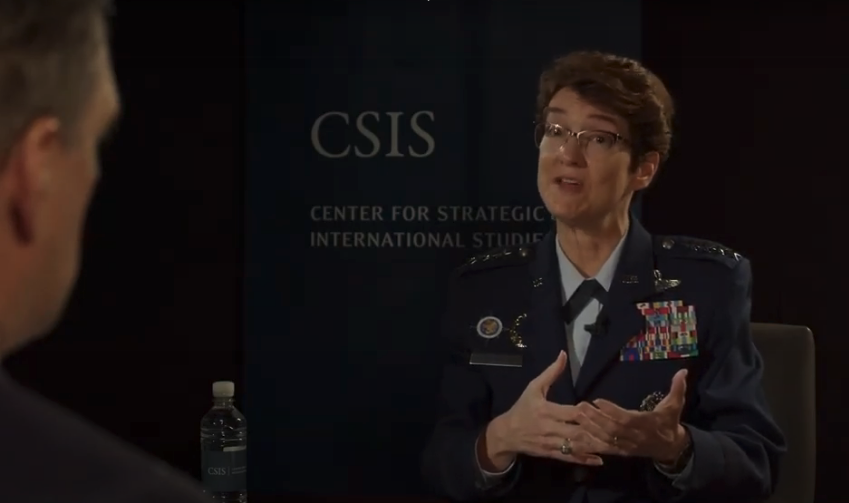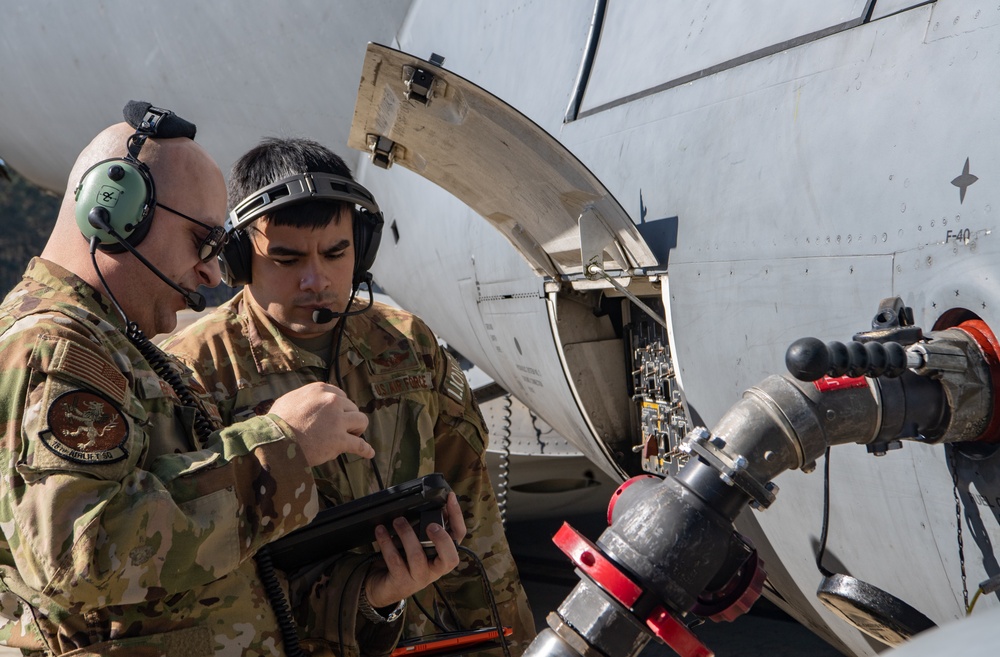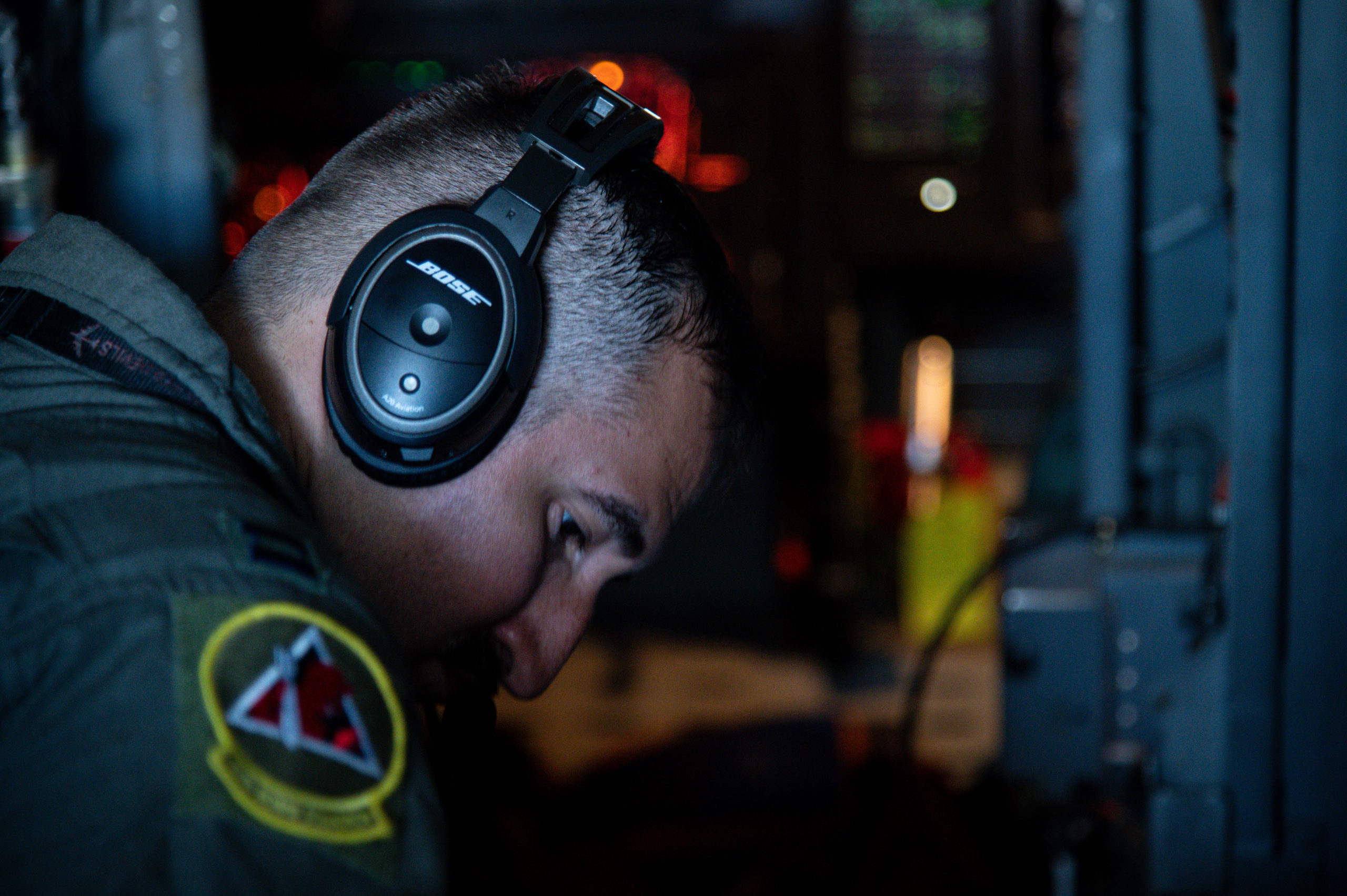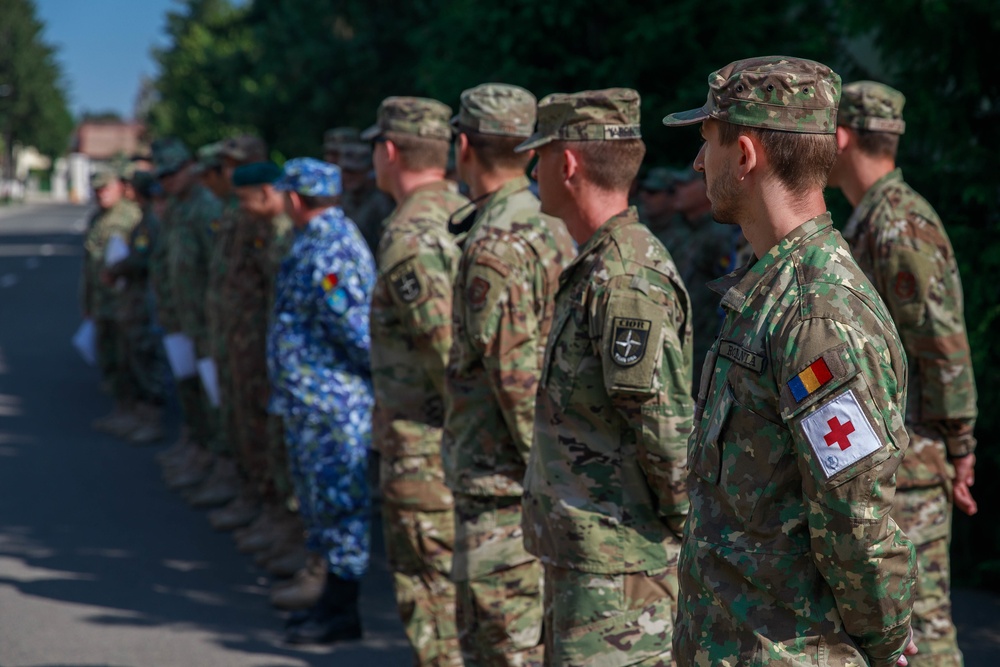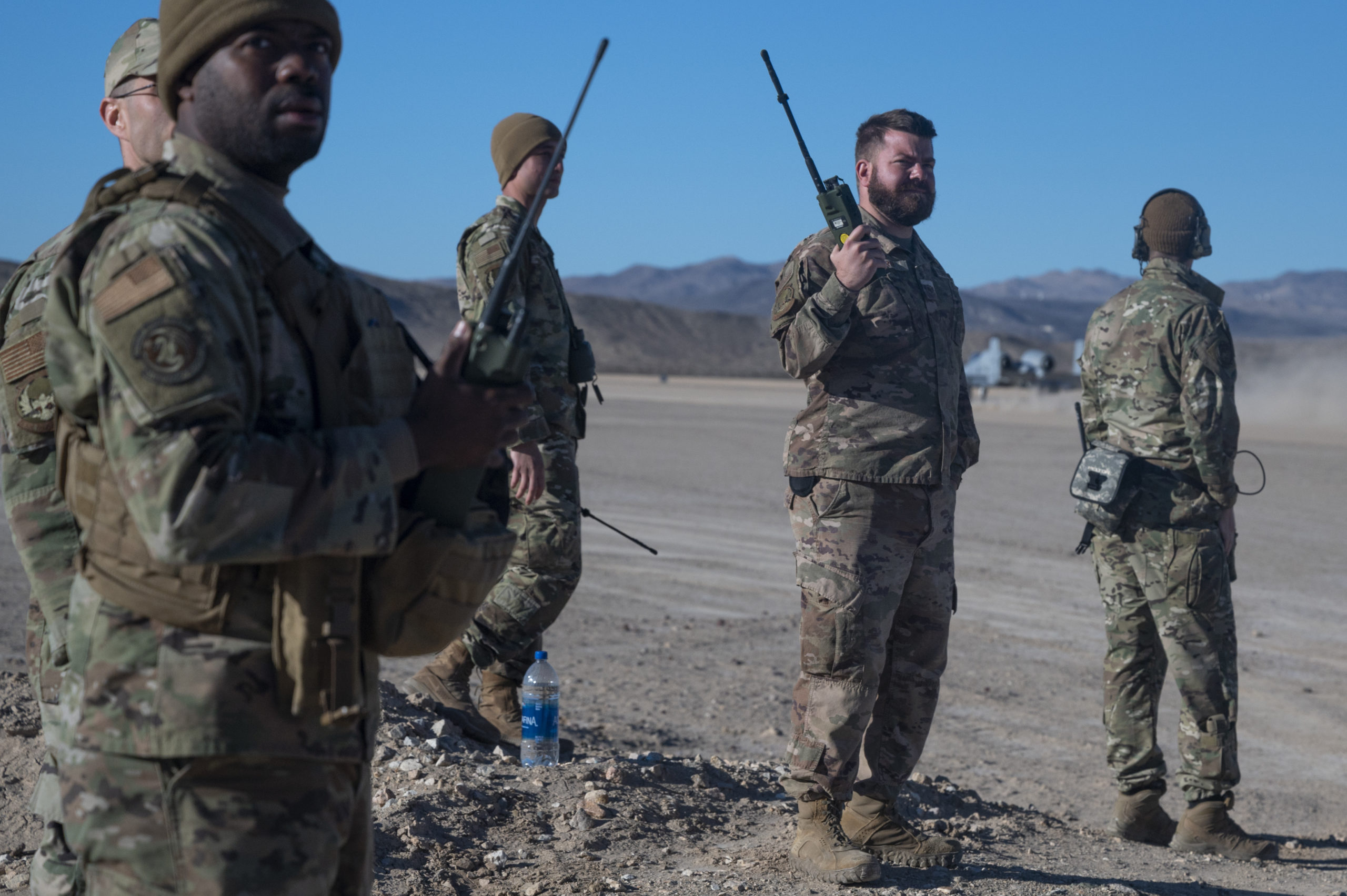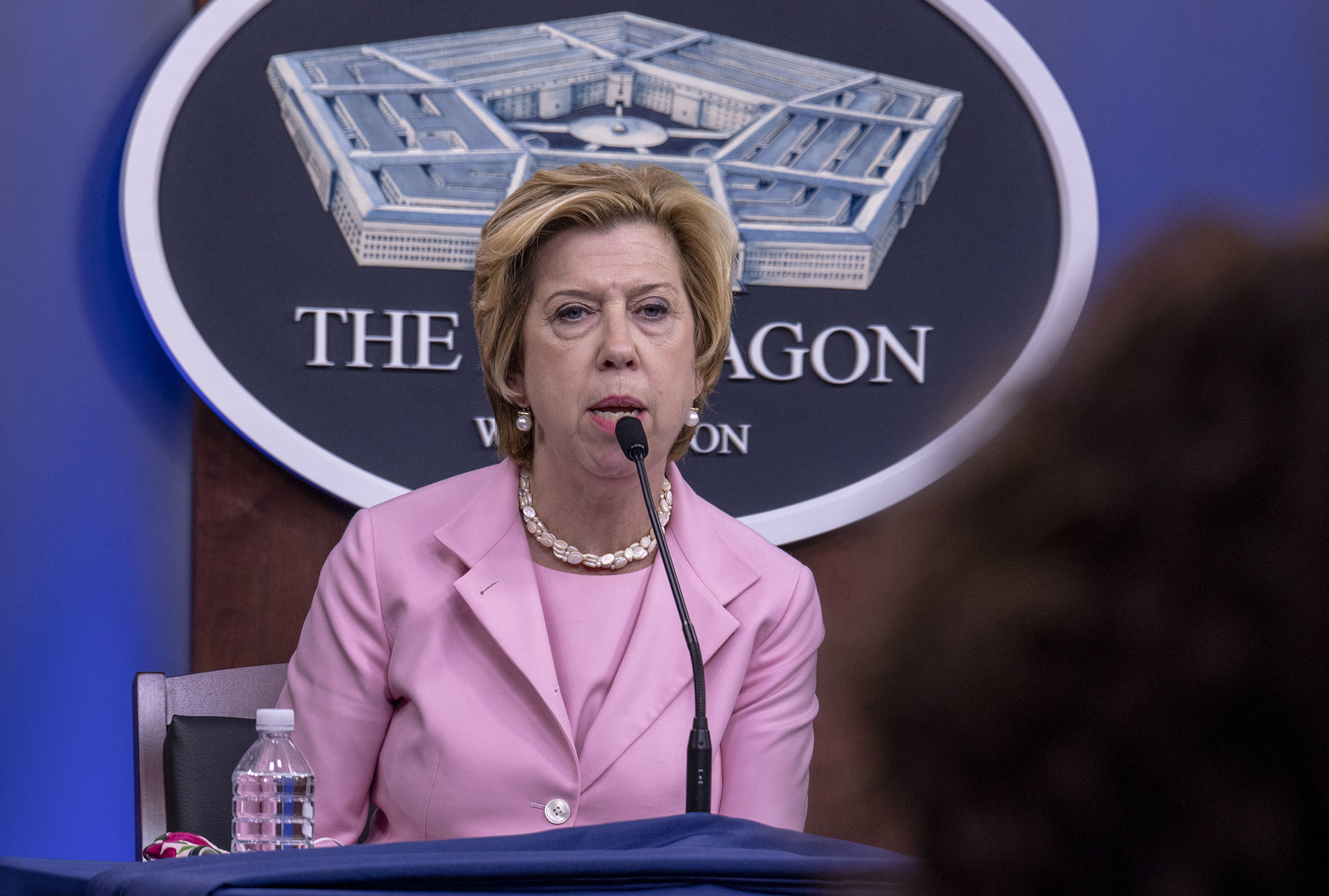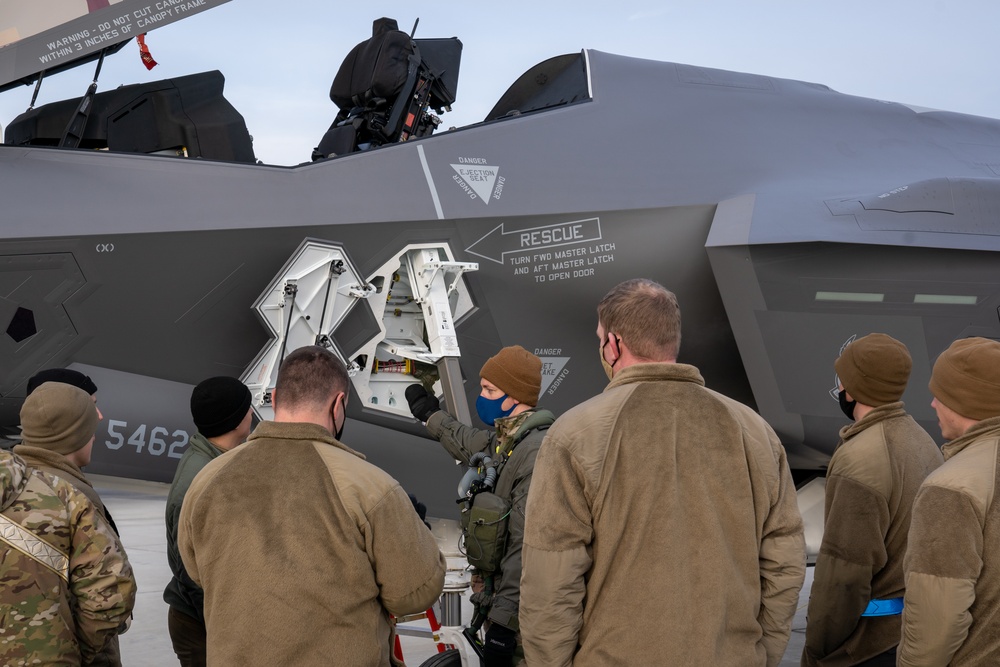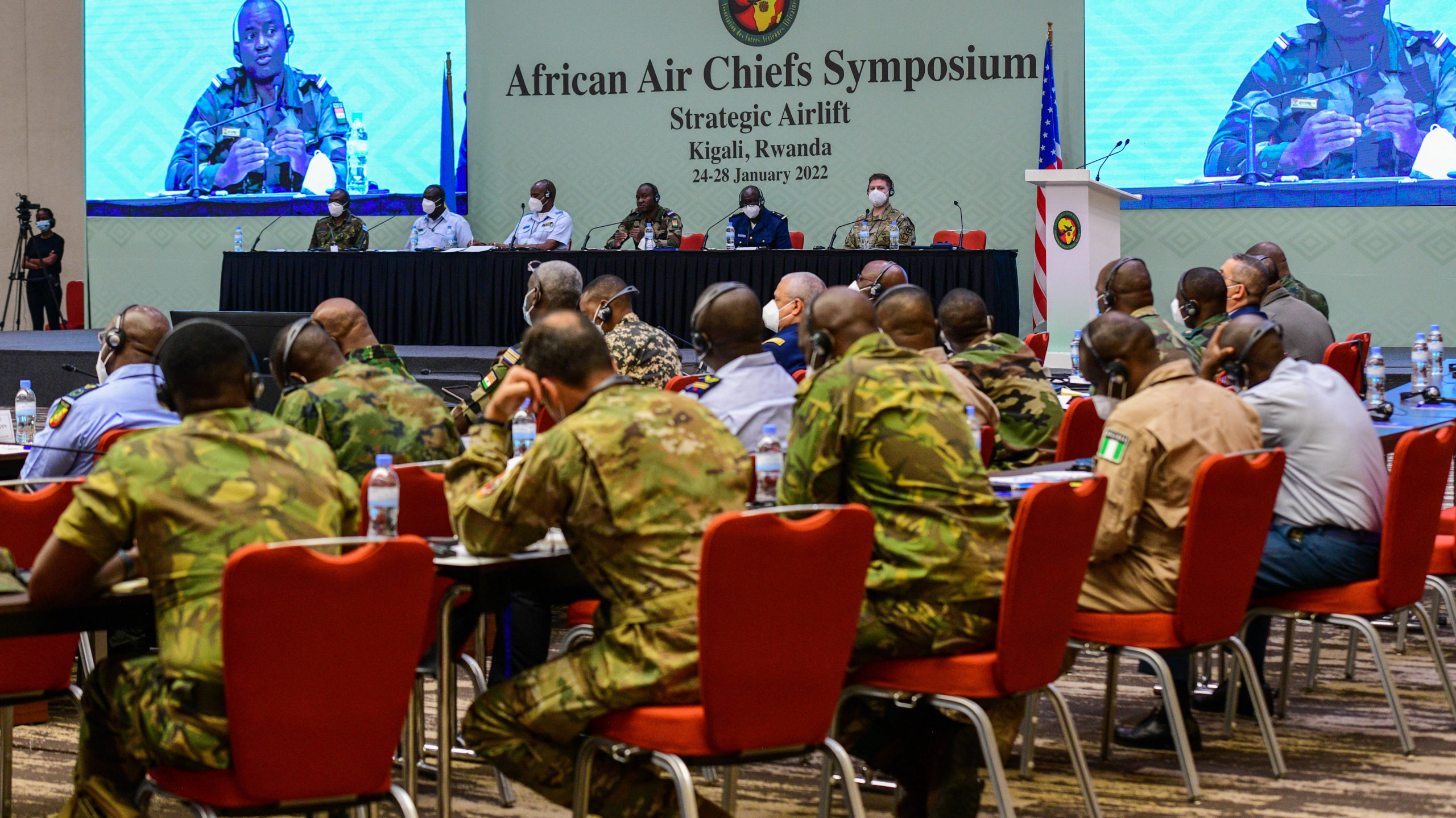The role of U.S. Transportation Command is likely to evolve under the upcoming National Defense Strategy, as the Defense Department shifts its focus to China and Russia.
TRANSCOM commander, Air Force Gen. Jacqueline D. Van Ovost, predicted the command will need to “meld better into the maneuver force,” based on DOD’s joint warfighting concept. She spoke during a webinar Feb. 2 hosted by the Center for Strategic and International Studies.
“One thing that has become really clear is that TRANSCOM has been the force that ‘deploys the force, sustains the force, and redeploys the force,’” Van Ovost said.
“Now we’re going to be deploying the force, maneuvering the force, sustaining the force, and redeploying the force,” Van Ovost said. “So what does that maneuver piece mean? What are we going to have to do?”
With Defense Secretary Lloyd J. Austin III having labeled China the department’s “pacing challenge,” Van Ovost predicted that the National Defense Strategy will shift to ensuring “that we can meet the gaps … with respect to that particular competitor.”
While TRANSCOM will maintain its ability to “around the world at a time and place of our choosing,” she said the command also is considering its Pacific posture.
In a “much, much larger theater than even [U.S. Central Command],” she said TRANSCOM is already thinking about, “What will we have to move? What will be there? … How do we build up our allies and partners in that area and shore up some capability? And should we have to go from competition into conflict, what are we going to be moving and where?”
Van Ovost characterized the federal “whole-of-government, whole-of-allies” approach to dealing with Russia, in its surrounding of Ukraine at the moment, as demonstrating “integrated deterrence in action.”
“You’re seeing Department of State, Department of the Treasury. You’re seeing Commerce. You’re seeing sanctions. You’re seeing Congress,” Van Ovost said. “You’re seeing, again, the Department of Defense, all the services, NATO, and our bilateral partners—and you’re seeing us all moving towards a sort of unified objective, unified actions, to achieve objectives of, in this case, Russian deescalation and bringing them to the diplomatic table.”
But she’s also planning for other scenarios.
Part of the command’s job, “especially right now,” is to prepare “for all those ‘what ifs,’” Van Ovost said. With regards to Russia, “There’s an Atlantic portion of that. There’s also a Pacific portion of that,” she said. At the same time, “I think about … our ability to see and counteract Russian activities coming from the Arctic.”
It’s a juggling act, but “when we think about the problem set that’s going on right now, that’s exactly what we’re doing in the background.”
